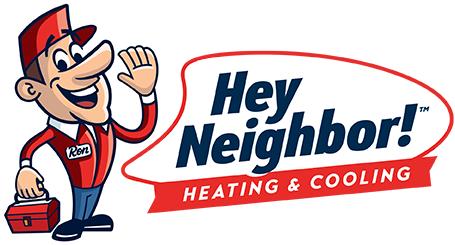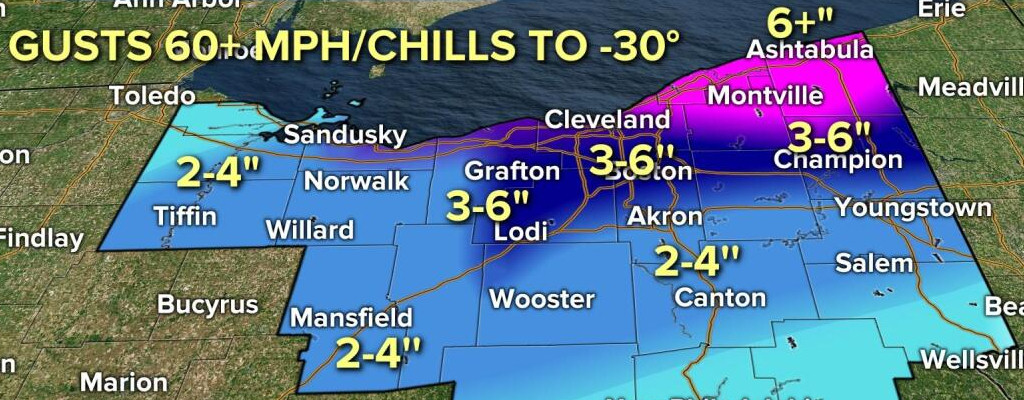We receive countless frantic calls every time the temperature drops below freezing, as homeowners here in Northeast Ohio experience problems with their home’s heating system. Though the last week or so has been pretty mild, we all know Old Man Winter will return with a vengeance soon. It’s inevitable. Our neighborly professionals want to share some HVAC tips to help keep your indoor living space nice and cozy while winter rages outside.
Helpful heating system information
As the saying goes – knowledge is power. Therefore, understanding your heating system is essential for maximum benefit. Here are some insights into your furnace’s operation during freezing weather:
Furnaces, boilers, and heat pumps are not designed for temperatures below -30°F. That means when you have wind chills below that mark, as we had over the holidays, your HVAC system must work much harder than usual to try and reach your thermostat’s target temperature. Keep in mind that it will struggle, and you may run into trouble with it. Instead of overworking your heater, consider putting on a sweater and throwing an extra blanket on the bed.
If you discover that your home’s temperature is dropping, but your vents are still blowing warm air, or your boiler’s radiators are still piping hot, it’s simply due to the extremely low outdoor temperatures. Stay mindful and observant to be sure your heating system is operating. If it appears to be failing, call us immediately.
Cold weather heating system tips
1. Be sure to keep your family safe using common sense during cold spells. Severe outdoor conditions can tempt homeowners into making unwise and unsafe decisions, with avoidably tragic results like a fire or carbon monoxide (CO) poisoning. Here are some of our best heating system tips:
2. Consider increasing your home’s temperature by a couple of degrees above your normal setting before the icy weather hits, and then leave your thermostat alone. Don’t turn it back down at night. During extreme cold, your furnace will struggle to get back to where you originally had it set.
3. Set your programmable thermostat to HOLD once you’ve temporarily raised the temperature. Then, you can switch it back to normal mode once temperatures outdoors rise again.
4. Replace your filter. Year-round, but especially during ultra-cold spells, you should change your filter every month.
5. Be sure your ceiling fans are running in each room to keep the warm air circulating. Also, check their rotation – they should be reversed to pull the warm air up and out toward the walls for maximum heat distribution.
6. Designate one room in your home to be the warmest, if necessary. Close any blinds and curtains to keep the warmth in, or put blankets over the windows using your curtain rod to reduce heat loss.
7. Check every register, air vent, and radiator to ensure they are clear of any obstructions. Keep furniture away to enable maximum airflow.
8. Keep your garage doors closed as often as possible. Even if your garage isn’t heated, a lot of heat escapes through those big, open portals to the outside.
9. Likewise, avoid repeatedly opening and closing your home’s exterior doors. The shorter they’re open, the less heat will escape outside. Also, use a door sweeper or a rolled-up towel at the base of your exterior doors to minimize any drafts from air leaks.
10. Regularly inspect your heating system’s intake and exhaust pipes outdoors, usually found on the back side of your home or on the roof. It’s common for ice to build up when it’s frigid outside or snow to block the openings when it’s windy. If you notice a blockage, push a broom handle into the pipe to break up any ice. However, if your pipes are on your roof, don’t go up there to clear the obstruction. Instead, call our professionals to come visit.
11. Be sure to keep your outdoor condenser unit clear of snow and if you have a heat pump. These obstructions will hamper your system’s ability to transfer much-needed heat into your home when you need it most.
12. Give your heating system a helping hand by doing some cooking or baking – or even just boiling water. This provides extra humidity and additional warmth to your indoor air. Beware, though – under no circumstances should you ever heat your home with a stove, oven, or grill, as this is extremely hazardous.
13. Another helpful cold-weather hack is to keep your cupboard and cabinet doors open where your plumbing is located to allow your furnace’s heat to reach your pipes better and keep them warm. The last thing you want during a cold snap is frozen pipes – or worse, having your pipes burst. During extremely cold temperatures, turn all of your indoor faucets on to a constant, room-temperature trickle.
14. Finally, check on your friends, family, and neighbors, as well as the elderly in sub-zero weather, to be sure they remain safe and warm.
At Hey Neighbor Heating & Cooling, we want to help keep your home comfortable during frigid temperatures and arctic-like weather. If you encounter any problems with your heating system, please contact us immediately at 844-HEY-NEIGHBOR. We’re available 24/7 and offer emergency service day or night. Let us keep your family safe and warm!


Comments are closed